Tailings Recycling: A Complete Guide to Sustainable Mining
3429Unlock the economic and environmental benefits of tailings recycling. Discover how this sustainable solution transforms mining waste into valuable materials.
View detailsSearch the whole station Crushing Equipment
Before investing, you must conduct an ore dressability test, select the correct processing flowsheet, configure equipment for optimal recovery, manage water and tailings costs, and choose the right construction partner. Answering these questions determines profitability.
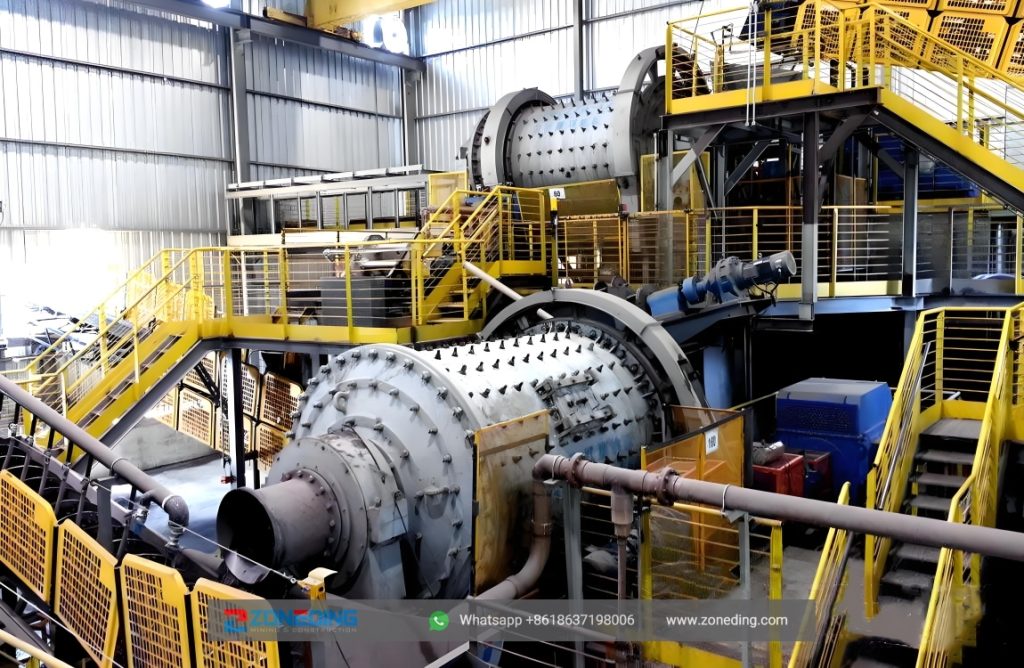
ZONEDING have spent many years evaluating, building, and fixing mineral processing plants. The projects that succeed and the ones that fail are separated by the quality of the answers to a few fundamental questions. This guide outlines these critical technical and business questions. My goal is to provide a clear framework for making a sound Mineral Processing Plant Investment.
A mineral deposit has been identified. However, without quantitative data on its physical and chemical properties, any investment is based on high-risk assumptions, not engineering facts.
An Ore Dressability Test / Mineralogical Analysis is a set of laboratory procedures that quantitatively determines the ore’s metallurgical characteristics. It is the mandatory first step required to engineer a technically sound and financially viable plant.
Designing a plant without a comprehensive ore characterization study is the most common cause of project failure. An ore body is not a uniform material; its properties dictate every subsequent design decision. This test provides the essential data for all process engineering and financial modeling. It replaces speculation with quantitative analysis. The results of this study form the technical basis for the entire Mineral Processing Plant design, from equipment selection to operating cost projections.
| Test Parameter | Technical Significance | Impact on Plant Design |
|---|---|---|
| Mineral Composition | Identifies valuable minerals and gangue to define separation requirements. | Determines the fundamental Mineral Processing Flowsheet / Technology. |
| Bond Work Index (BWi) | Measures the specific energy (kWh/ton) required to grind the ore. | Dictates the required size and power of the Ball Mills. |
| Abrasion Index (Ai) | Quantifies the abrasive nature of the ore. | Informs the material specification for crusher and mill wear parts. |
| Liberation Size | The particle size at which valuable minerals are physically separate from gangue. | Sets the target product size for the Grinding and Classification circuit. |
Multiple mineral separation technologies exist. The application of a process that is incompatible with the ore’s mineralogy will result in low recovery rates and high operating costs.
The choice of Mineral Processing Flowsheet / Technology is determined by the ore’s physical and chemical properties. Use a Flotation Process for sulfide minerals, a Magnetic Separation Process for ferromagnetic minerals, and a Gravity Separation Process for minerals with a high specific gravity differential.
The selection of a separation process is not a discretionary choice; it is dictated by the ore’s properties as identified in the metallurgical testing phase. Applying an incompatible process to an ore will result in the inefficient separation of valuable minerals from gangue, leading to high mineral losses to the tailings stream and rendering the operation unprofitable. The metallurgical test report will provide a definitive recommendation on the optimal technology required to achieve the target concentrate grade and Recovery Rate.
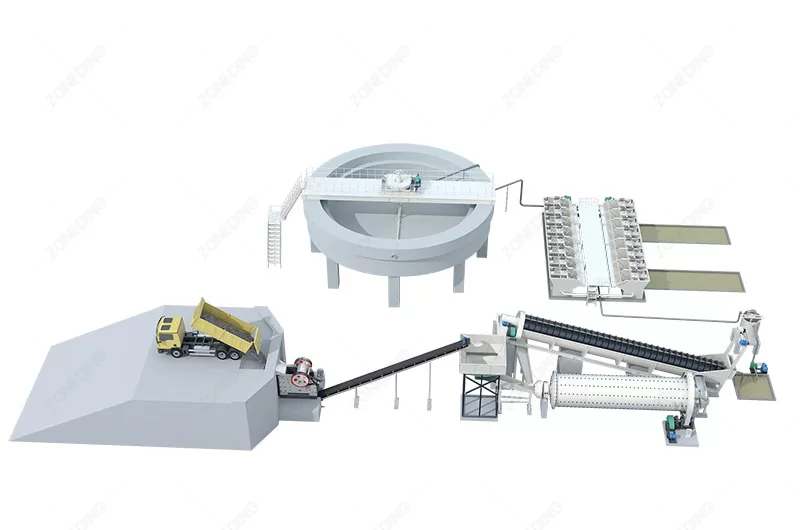


| Process Technology | Separation Mechanism | Primary Application |
|---|---|---|
| Flotation | Chemical modification of mineral surfaces to achieve selective attachment to air bubbles. | Sulfide ores (Copper Processing Plant, Lead Zinc Processing Plant), some industrial minerals. |
| Magnetic Separation | Utilizes magnetic fields to separate minerals based on magnetic susceptibility. | Iron ores (Magnetite Separation Plant), removal of magnetic contaminants. |
| Gravity Separation | Exploits differences in specific gravity to separate minerals in a fluid medium. | Precious metals (Hard Rock Gold Mining), dense industrial minerals (Tin Ore Processing Plant). |
A plant’s overall efficiency is a function of its system design, not the performance of individual machines. A collection of uncoordinated equipment will create process bottlenecks and increase the cost per ton.
Effective equipment configuration is based on a systems engineering approach. Each machine in the Crushing Circuit and Grinding and Classification circuit must be sized based on mass balance calculations to achieve a continuous process flow. The objective is to achieve mineral liberation at the lowest Cost per ton.
A processing plant is an integrated system governed by the principles of mass and energy balance. The output of one stage is the input for the next. If any machine is undersized relative to the design throughput, it will become a bottleneck, limiting the capacity of the entire plant. Conversely, an oversized machine represents inefficient capital allocation. The Process Flow Diagram (PFD) is the engineering document that defines these equipment relationships and material flows. Proper circuit design also aims to minimize the over-grinding of ore, which generates excessive fine particles. These fines can lead to mineral losses and downstream processing difficulties, negatively impacting profitability.
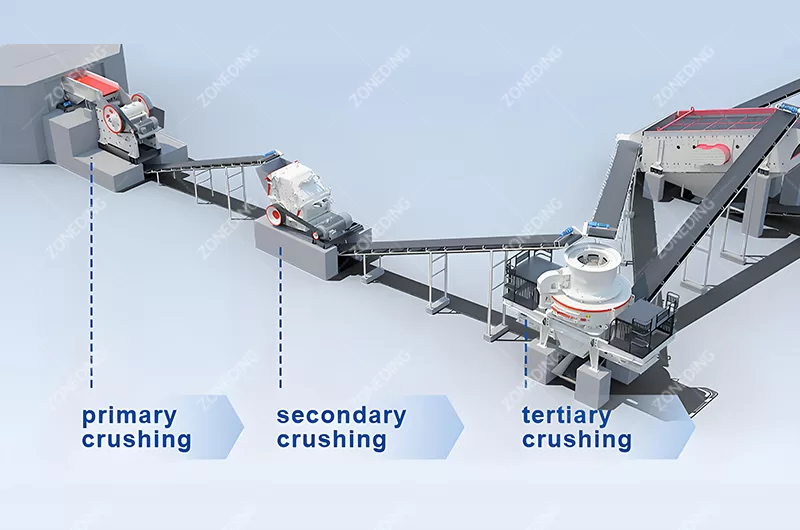
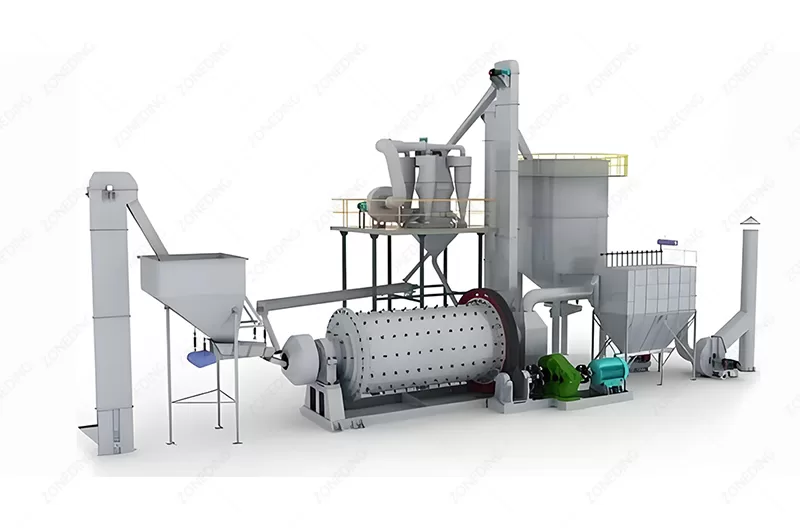

| Stage | Engineering Objective | Key Equipment |
|---|---|---|
| Crushing | Reduce Run-of-Mine (ROM) ore to a size suitable for the grinding circuit. | Jaw Crusher, Cone Crusher, Vibrating Screen. |
| Grinding | Reduce particle size to the target liberation size. | Ball Mill, Rod Mill, Hydrocyclone Classifiers. |
| Separation | Concentrate the liberated valuable minerals from the gangue. | Flotation Machine, Magnetic Separator, Shaking Table. |
The long-term costs and liabilities associated with water management and tailings disposal are frequently underestimated in preliminary financial models. They can become dominant components of the plant’s operating cost.
Water management and tailings disposal are major, non-negotiable operating costs. Water circuits consume significant energy and chemical reagents. Tailings require engineered storage facilities (Tailings Dry Stacking), continuous management, and large financial provisions for closure.
In wet processing circuits, water is a primary process input and a major cost driver. The primary costs are the electrical energy required for pumping and the consumption of flocculants and other reagents for water clarification in thickeners. An inefficient water circuit directly increases operating expenditure (OPEX). Tailings, the waste stream from the process, represent a permanent environmental liability. The construction of a modern, geotechnically stable tailings storage facility (TSF) is a significant capital expenditure (CAPEX). The TSF requires ongoing operational management and regulatory compliance, and a substantial financial bond must be set aside for its eventual closure and reclamation. Inaccurate accounting for these costs in the initial Feasibility Study will lead to future financial shortfalls.
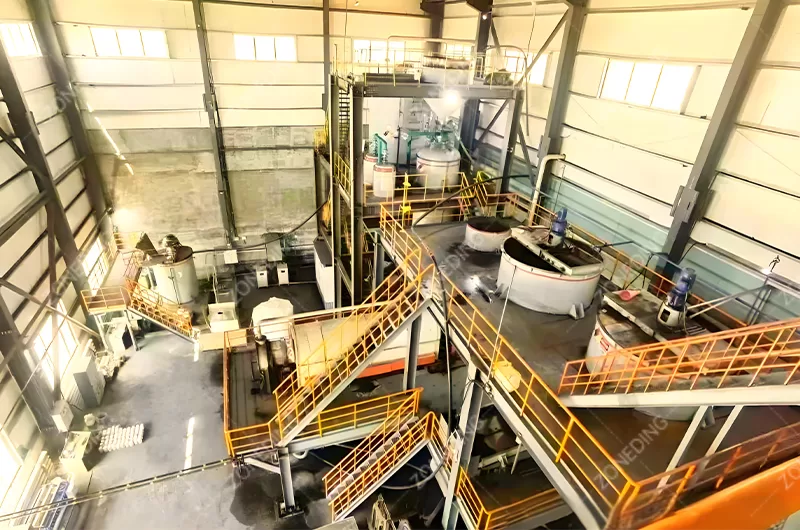
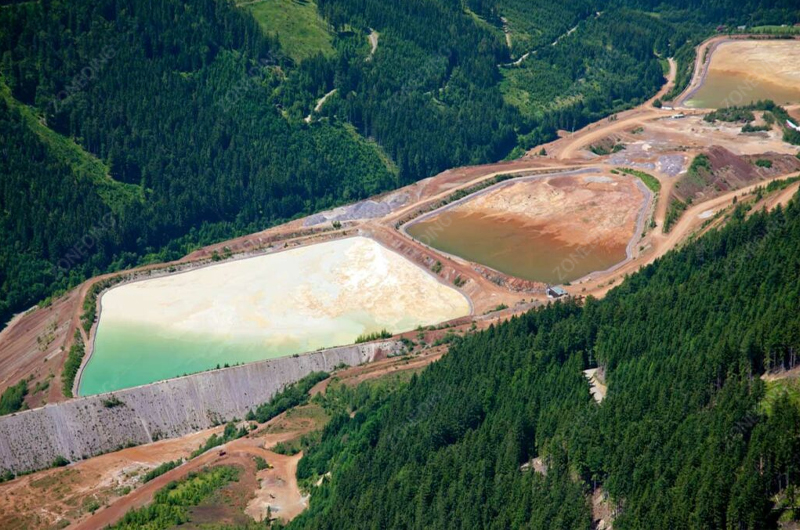
| Cost Center | Associated Expenses | Mitigation Strategy |
|---|---|---|
| Water Management | Pumping energy (kWh), reagent consumption (kg/ton), pipeline maintenance. | Design a high-efficiency water reclamation circuit using Thickeners to achieve a high recycling rate. |
| Tailings Management | TSF construction (CAPEX), slurry pumping, geotechnical monitoring, reclamation bond. | Evaluate dewatering technologies (e.g., filter presses) to reduce the TSF footprint and long-term liability. |
The construction of a plant requires a primary technical partner. The decision between contracting directly with an equipment manufacturer or a dedicated EPC firm depends on the project’s scale and the owner’s internal engineering capacity.
An equipment manufacturer supplies machinery. An EPC Service / Turnkey Project contractor provides a complete solution: Engineering, Procurement, and Construction. For an entire plant, the EPC model provides a single point of responsibility, which mitigates project risk for the investor.
A clear distinction is necessary. An equipment manufacturer possesses deep expertise in its specific products. Some manufacturers, such as our company, also provide full EPC services, integrating product expertise with project delivery capabilities. A general EPC firm manages the entire project but may procure equipment from multiple third-party suppliers. For an investor lacking a large in-house engineering and project management team, the EPC model is generally preferable. It ensures system integration and assigns accountability for schedule, budget, and performance to a single entity. The most critical selection criterion is a partner’s demonstrated track record in constructing plants for the specific ore type.
| Partner Type | Scope of Responsibility | Recommended For |
|---|---|---|
| Equipment Manufacturer | Supplies and supports specific machinery; may offer design assistance. | Clients with strong internal project management and system integration capabilities. |
| EPC Contractor | Manages all project phases from engineering design to commissioning. | Investors seeking a turnkey solution with minimized interface risk. |
Realistic budget and timeline projections are fundamental requirements for securing financing and for project planning. These metrics are highly variable and depend on the project’s specific parameters.
A small-scale plant may cost less than $1 million and be constructed in under a year. A mid-sized plant typically costs $5-$20 million with a timeline of 18-24 months. Large-scale projects exceed $100 million and require several years for permitting and construction.
The project timeline and the Cost to build a processing plant are functions of several variables. The plant’s processing capacity (throughput in tons per day) is the primary determinant of cost. The complexity of the Mineral Processing Flowsheet / Technology is the second major factor; for example, a multi-stage flotation circuit with a regrind mill is more capital-intensive than a simple gravity separation circuit. Project location significantly affects logistics, labor, and infrastructure costs. Finally, the duration of the environmental and social permitting process is often on the project’s critical path and can take years to complete before any construction can commence.
| Plant Size (TPD) | Typical Budget (USD) | Typical Timeline (Design to Commissioning) |
|---|---|---|
| < 500 TPD | $500,000 – $5 Million | 9 – 15 Months |
| 500 – 2,000 TPD | $5 Million – $20 Million | 18 – 24 Months |
| > 2,000 TPD | $20 Million+ | 24+ Months |
To advance a project from concept to the financing stage, a preliminary technical and economic study is required. This serves as the basis for a more detailed bankable feasibility study.
By providing your ore test report to a qualified EPC provider such as ZONEDING, we can develop a no-cost conceptual flowsheet, a preliminary equipment list, and a basic Mining project ROI analysis to support your investment decision.
A preliminary study is the first step in converting a mineral resource into a productive asset. The process is data-driven, beginning with the client’s Ore Dressability Test / Mineralogical Analysis report. Our process engineers analyze this data to develop a conceptual process flowsheet optimized for the specific ore. Based on this flowsheet, we generate a preliminary list of the major Mineral Processing Equipment. Finally, we develop a high-level financial model to estimate the order-of-magnitude capital investment (CAPEX) and operating costs (OPEX). This allows for a preliminary calculation of the project’s potential return on investment. This service provides the necessary information to determine whether to commit resources to a full Feasibility Study.
A profitable Mineral Processing Plant is the result of data-driven engineering, systematic planning, and a complete understanding of all long-term costs. Addressing these key questions before committing capital is the most critical action an investor can take to ensure project success.
Unlock the economic and environmental benefits of tailings recycling. Discover how this sustainable solution transforms mining waste into valuable materials.
View detailsA complete guide to the kaolin mining process. Learn every step from raw material extraction to achieving high-purity kaolin using best industry practices.
View detailsA detailed explanation of a lead-zinc ore processing line. Understand the science of preferential flotation to separate lead (galena) and zinc concentrates.
View detailsLearn the four key iron ore beneficiation methods to turn low-grade ore into valuable concentrate, including magnetic, gravity, flotation, and other processes.
View detailsWe use cookies to ensure that we give you the best experience on our website. If you continue to use this site we will assume that you are happy with it.
Privacy Policy